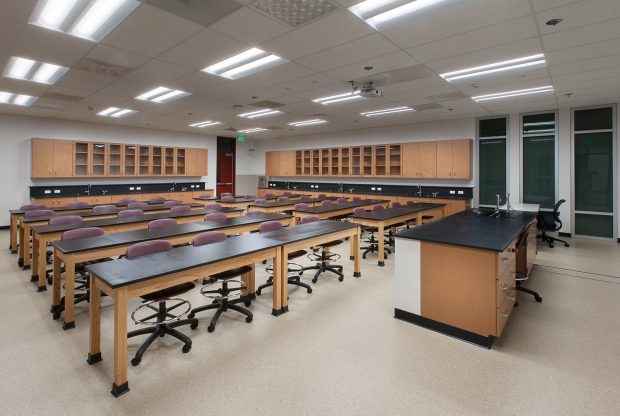Creating a Safe Environment
In order to create a supportive and safe environment, the classroom environment itself must feel like a community in which people feel belonged or welcomed. I plan to accomplish this by physically changing the classroom. One example Cervone & Cushman (2014) uses of changing the classroom is filling the walls with student artwork and posters (p. 3). These posters could be about the elements of a periodic table, surface area and volume of a student-made house, or even a famous person you would learn in Social Studies. By doing so, students will feel that they are part of the classroom because their work itself is on the wall. This is also beneficial because students can examine each other works to see the similar and differences between their posters. Another example of changing the classroom would be putting the desks in groups, rather than having the desks separated apart. This is especially useful when you are doing group assignments, or projects where they are needed to interact with another. This helps promote collaborative learning, and creates an environment in which they can they can be close enough to talk with each other.
Another way I plan to create a supportive and safe environment is simply leaving your classroom door open at any time before, during, or after class. By leaving your door open, you are inviting students into your classroom, and telling them that you can support and aid them in whatever they need help with. Leaving your door open also creates a sense of freedom in the environment. This is because people are free to leave or come in as they wish.
Not only do we have to create a supportive and safe environment, but we also need to build positive and respectful relationships. This can be done in many ways such as creating a stronger student-teacher relationship by spending more time together, and creating inquiry-based projects. Some examples Hamre & Pianta (2006) that suggests for creating a stronger student-teacher relationship are having students and teachers eat lunch together in small consistent groups at the lunchroom, or participate in non-academic extracurricular activities (p. 64). I feel that this is very important because I believe that students and teachers must interact with some other outside of the classroom. This shows the student that the teacher is not only an educator who teaches course content in a classroom, but is a person that cares for his students.
Inquiry based projects are essential for creating positive relationships between students. By working in groups, students will learn how to take consideration of the “goals” of each individual, learn how to positively collaborate with one another, and learn group-management strategies. A great example of an inquiry-based project would be exploring different proofs of Pythagorean Theorem in mathematics. Each group can be given a different proof, and each group will explore why the theorem works. Then later they can present to each other in the classroom, so they can see that mathematical proofs can be solved in a variety of different methods rather than just one.
When it comes to maintaining a positive classroom environment, one must consider fostering social and emotional learning of students. One can do so by engaging in frequent social conversations with students (Hamre, B.K., & Pianta, R. C., 2006, p.65). These social conversations could be about lives outside of school, after-school activities, things in other classes, or even at home. Another example of fostering SEL is by conveying to students that “they matter” and “they can” (Cervone & Cushman, 2014, p. 5). One way we can convey this is simply using encouraging words on hard days, applaud for small or big achievement or progress the student has made, and reaching out to students at unexpected times.
The last thing I would like to touch on when creating positive classroom environments is preventing problems before they even occur. One example Cervone & Cushman’s (2014) uses is incorporating classroom rules, which are created collaboratively by students and teachers (p. 3). The teacher and the students can create rules such as: setting a format for quizzes and test, having short breaks in class, giving permission to students to listen to music after the lecture, and much more. I would personally prefer the rules to be set at the very first day of class. By doing so, expectations are set at the very beginning, and students will follow it to ensure themselves to not break the rules. Another example of preventing problems is to simply be available to students who are having a hard time (Hamre, B.K., & Pianta, R. C., 2006, p.65). Being available to students may be hard at times, but this can be solved by simply being there 30 minutes before or after class. I believe it is important for educators to share your thoughts and ideas of the student’s problem. By addressing solutions to a student’s problem, we can prevent further problems that may heavily impact them in the future.
